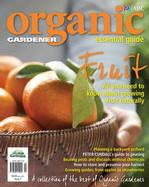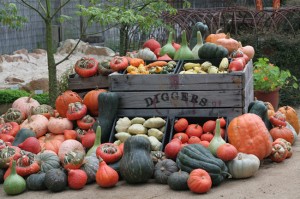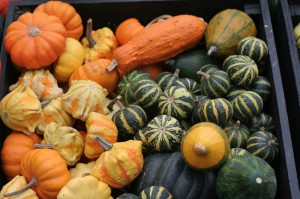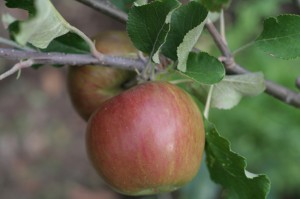 Organic Gardener Essential Guide: Fruit
Organic Gardener Essential Guide: Fruit
This mook (a cross between a magazine and a book) is the second in the series produced by Organic Gardener Magazine. It is made up of articles by well-known garden writers from across Australia. Some articles have been previously published by Organic Gardener, others are written specifically for this mook. There is everything from pruning (an article I keep going back to, to check how it should be done) by Peter Cundall to pest control by Jerry Coleby-Williams and planning the orchard by Phil Dudman. It also looks at harvesting and storing the produce. The fruits covered include apples, avocado, bananas, berries, citrus, grapes, mangoes, melons, nuts, olives, passionfruit, stone fruit and strawberries. Comprehensive and cheap at only $10.
Borrow a copy from your library, buy one from your local newsagent or go to the store on this website and buy a copy online
Last weekend saw a celebration of old cultivars and varieties of both fruit and vegetables. At Diggers Heronswood, Dromana it has been the Harvest Festival Weekend with a really beautiful array of pumpkins and squashes, garlic for sale and tomatoes to taste. Nearly all of these are heirloom or open pollinated varieties that are so important both for our gardening history and our future. Heirloom and heritage varieties are an integral part of organic gardening, many are the result of selective breeding over numerous generations so that they show special characteristics.

Turk's Turban, Delicata, Potimarron, Australian Butter, Buttercup and Bohemian are just a few of the heirloom varieties of pumpkins available to grow.

Heirloom varieties of squash, gourds and small pumpkins
Read more

A ripe Jonathan apple
This bountiful season of “mists and mellow fruitfulness” sees an abundance of ripe pome fruits on the trees. As well as the better known apples and pears there are also persimmons, pomegranates, quinces, rowans and rose hips.
Our supermarkets and greengrocers offer only about 5 varieties of apples and 3 different pears and we almost never see any of the other autumn fruits mentioned above. The obvious conclusion is that if you want really good fruit and anything other than these common varieties then you need to grow them yourself.
Although you can now buy potted fruit trees all year round, it’s best to use bare rooted apple and pear trees. These are purchased and planted in winter when you’ll find most nurseries offer at least a limited range. Autumn however, is the perfect time to plan your orchard (no matter how small), to taste the different varieties and to order your plants. At the National Trust Property, Rippon Lea, there is a large orchard of more than 100 different apples and 30 different pears. They have an Apple Day on Sunday 3rd of April 2011 when 40 of these varieties will be for sale, including some that are grown only for cider.
Apart from Rippon Lea, if you want something other than the more common varieties then you’ll need to order your trees from a specialist nursery. Read more
 Organic Gardener Essential Guide: Fruit
Organic Gardener Essential Guide: Fruit


